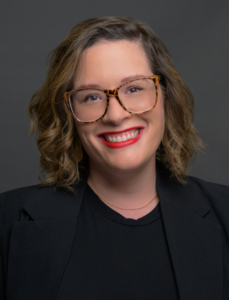Working with Feds for as long as we have here at Serving Those Who Serve, we know firsthand that as people age, making strategic decisions around finances and legacy planning becomes crucial, particularly when it comes to creating and maintaining tax flexibility in retirement. In this article, we'll delve into the benefits of an advanced, layered planning approach that involves pairing a Qualified Charitable Distribution (QCD) strategy with a Roth conversion strategy. This approach is especially relevant for seniors with significant pre-tax assets who have longevity and/or are concerned about repositioning assets for the benefit of their heirs.
Understanding QCD and Roth Conversion Strategies:
Before delving into the synergies between QCD and Roth conversion strategies, it's essential to grasp the fundamentals of each approach.
What is a Qualified Charitable Distribution (QCD)?
A QCD allows individuals who are 70½ or older to donate up to $100,000 annually from an IRA directly to qualified 501(c)(3) charitable organizations. This distribution can cover part or all of the individual’s Required Minimum Distribution (RMD) for the year, but the amount of the QCD is importantly not included in their adjusted gross income (AGI) for the year, as would be the case if they took the RMD as a distribution made payable to themselves directly. (As a reminder, an RMD is a mandatory minimum withdrawal that folks over the age of 73 are required to make each year, based on the prior end-of-year balance in their pre-tax requirement accounts. Interestingly, although the RMD age was pushed back from age 70 ½ to age 73 in 2023, the earliest age at which individuals can process QCDs remained 70½, so it is actually possible to begin doing QCDs prior to attaining RMD age.)
What is a Roth Conversion?
A Roth conversion involves transferring funds from a Traditional IRA or other pre-tax retirement account into a Roth IRA. The amount that is converted is added to the individual’s taxable income for the year and is taxed at their current income tax rate; however, the converted funds can then be invested for growth within the Roth IRA, allowing for tax-free withdrawals of the principal and growth in retirement. For those who are looking to avoid higher tax rates in the future, a Roth conversion can offer potential long-term tax savings and flexibility, even for seniors! According to the CDC, the average life expectancy in the U.S. as of 2022 was 74.8 for men and 80.2 for women. Assuming the 10% average annual rate of return that is generally estimated for equity portfolios, a $100,000 Roth conversion made at age 73 could generate close to $95,000 of tax-free growth over a period of 7 years. A Roth conversion strategy could therefore be very useful for individuals who are looking to generate tax-free growth for themselves in their 80s and 90s, as well as for those who are looking to reposition assets in order to benefit their heirs. For a more in-depth discussion on why 2024 and 2025 present a unique opportunity window for Roth conversions see my earlier article on this topic.
Check out our webinars for federal employees!
Pairing Strategies for Maximum Benefit:
Now that we’re clear on the details of these two individual strategies, let's explore how combining them may optimize outcomes for seniors, particularly those over age 73 with substantial pre-tax assets.
Reducing RMDs and Taxable Income: By utilizing QCDs to satisfy all or a portion of their RMDs, seniors can lower their taxable income. This reduction may help them stay in a lower tax bracket, thereby minimizing Medicare premium increases and allowing them a buffer for the taxable income associated with a Roth conversion.
Strategic Roth Conversions: Simultaneously, seniors can strategically execute Roth conversions with the aim of gradually shifting pre-tax assets into tax-free Roth accounts. By converting assets during years with lower taxable income, individuals have the potential to minimize the tax impact of their conversions and maximize the long-term benefits of tax-free withdrawals in retirement.
Long-Term Tax Planning: Combining QCDs with Roth conversions offers a comprehensive approach to long-term tax planning. QCDs provide immediate tax benefits by reducing AGI, while Roth conversions offer tax diversification and flexibility in managing retirement income streams in the years to come. This strategic pairing potentially allows seniors to optimize tax efficiency both now and in the future.
Gender Considerations: Women in particular may benefit significantly from these combined strategies due to their longer life expectancies and higher risk of outliving their retirement savings. By implementing QCDs and Roth conversions, women can help enhance their financial independence, create and maintain tax flexibility, and ensure sustainable income throughout their lifetimes.
Navigating the complexities of retirement planning requires a multifaceted approach. Pairing QCD and Roth conversion strategies offers a powerful strategy designed to optimize retirement income, promote tax efficiency, and secure financial wellbeing—especially for women. A word of caution, however: this is an advanced planning strategy, so we do not advise going it alone! We recommend speaking with your financial professional before implementing any part of this strategy. If you don’t currently have a professional on your side, feel free to reach out to the team at Serving Those Who Serve for individualized guidance. Our hope is that by strategically leveraging tactics like the QCD/Roth conversion layered strategy, seniors can enjoy greater confidence and financial stability in their golden years.

Katelyn Murray, CFP®, ChFEBC℠, FBS®, CFT-1™: Relationship Team Lead & Financial Planning Expert
Katelyn is a financial advisor with over a decade of experience working with Feds to build a healthy, balanced relationship with money and to design and enjoy the retirement of their dreams. In addition to her CERTIFIED FINANCIAL PLANNER™ and Chartered Federal Employee Benefits Consultant℠ designations, Katelyn also holds a Master in Business Administration as well as a graduate certificate in financial psychology and behavioral finance. Her unique approach merges financial psychology with traditional wealth management expertise to create an integrated financial planning approach that helps clients make the most of the one resource they can’t get more of: time.
Here at Serving Those Who Serve, Katelyn serves as our Director of Relationship Management, mentoring our advisors and guiding our client experience. She also co-hosts The Fed15 podcast each week with STWS founder Dan Sipe.
Certified Financial Planner Board of Standards Inc. owns the certification marks CFP®, CERTIFIED FINANCIAL PLANNER™, CFP® (with plaque design) and CFP® (with flame design) in the U.S., which it awards to individuals who successfully complete CFP Board's initial and ongoing certification requirements.
**Written by Katelyn Murray, CFP®, ChFEBC®, FBS®, CFT-1™, ECA. The information has been obtained from sources considered reliable but we do not guarantee that the foregoing material is accurate or complete. Any opinions are those of Katelyn Murray and not necessarily those of RJFS or Raymond James. Any information is not a complete summary or statement of all available data necessary for making an investment decision and does not constitute a recommendation. Investing involves risk and you may incur a profit or loss regardless of strategy suggested. Every investor’s situation is unique and you should consider your investment goals, risk tolerance, and time horizon before making any investment or financial decision. Prior to making an investment decision, please consult with your financial advisor about your individual situation. While we are familiar with the tax provisions of the issues presented herein, as Financial Advisors of RJFS, we are not qualified to render advice on tax or legal matters. You should discuss tax or legal matters with the appropriate professional. **





